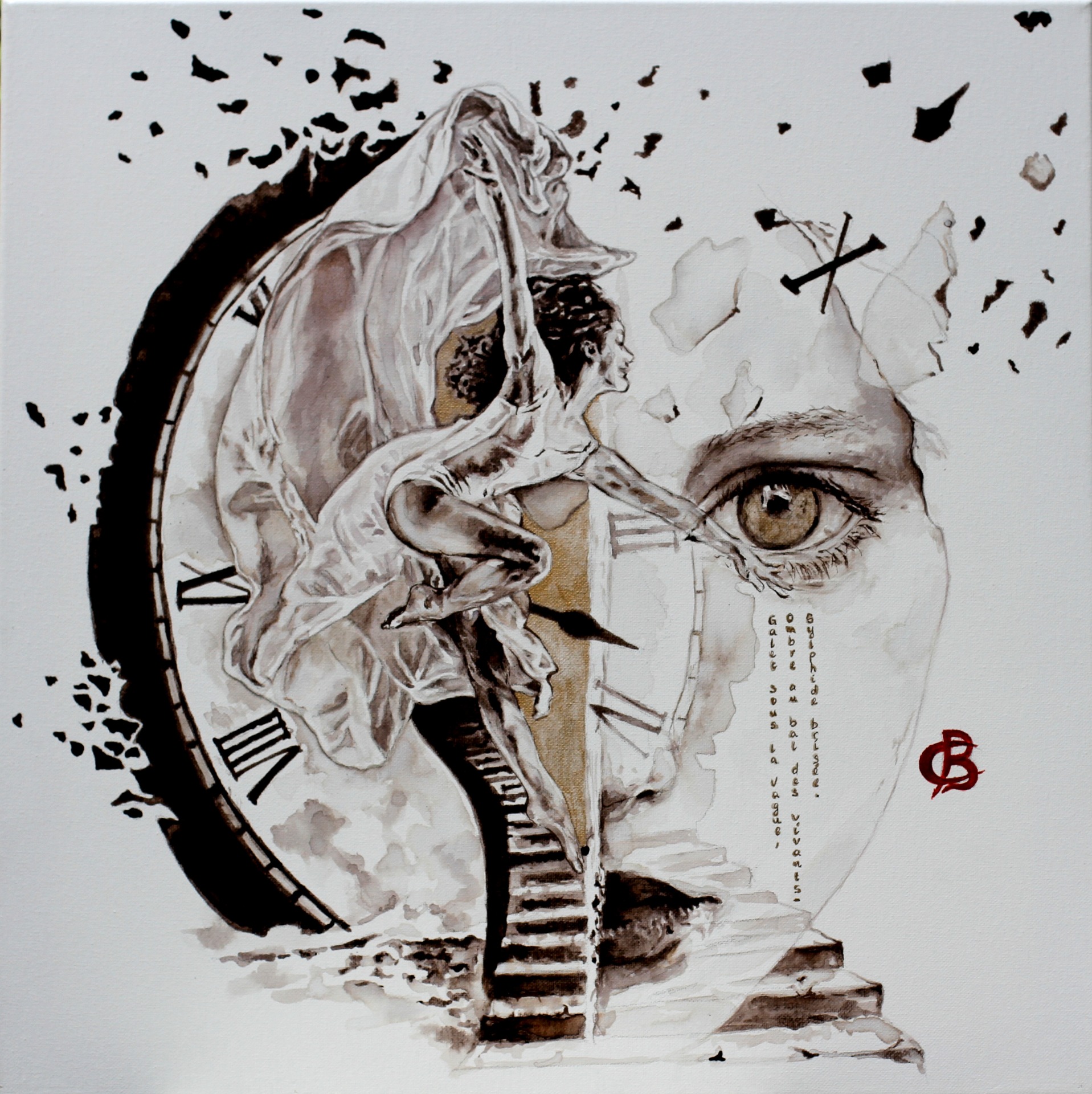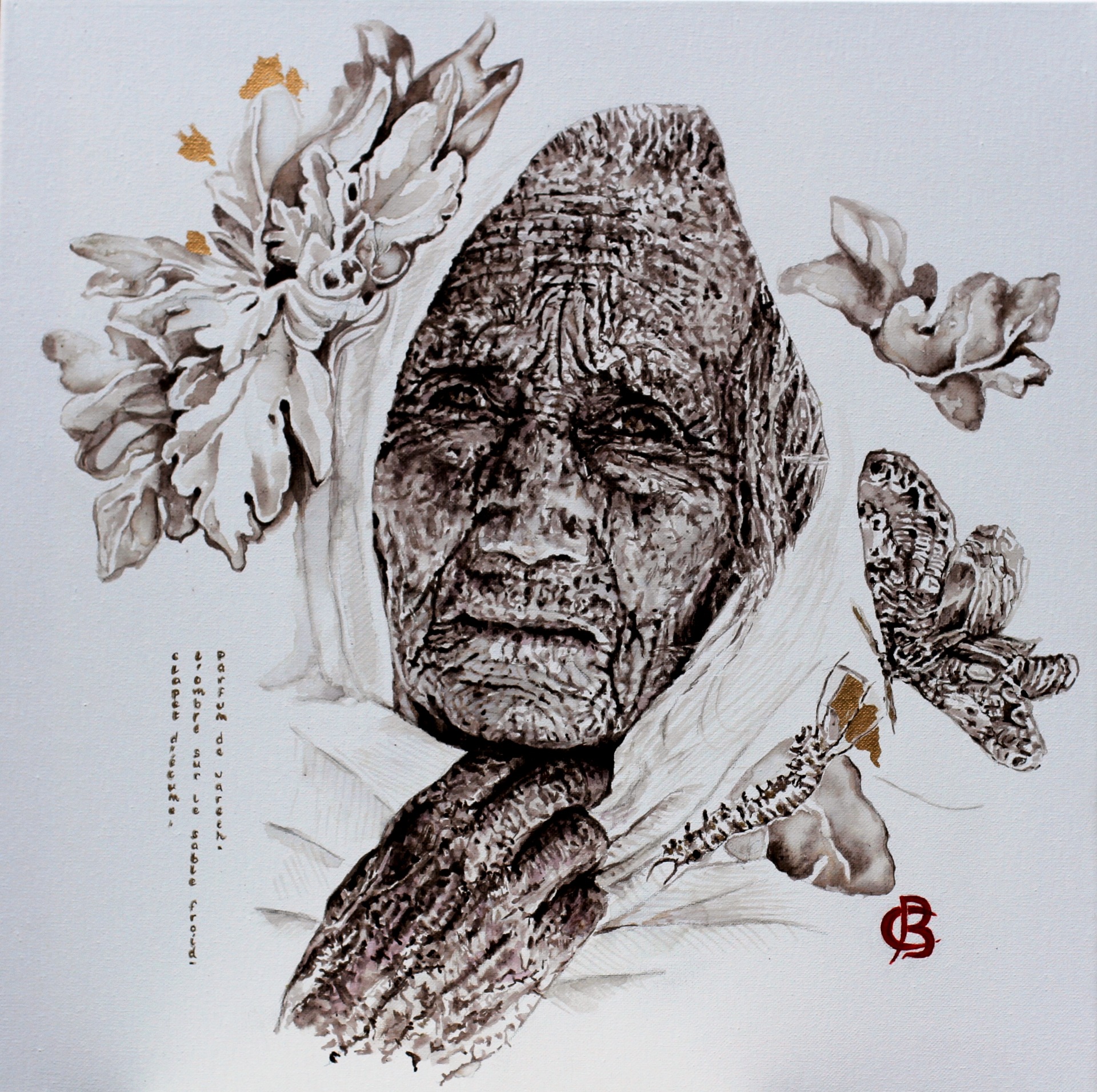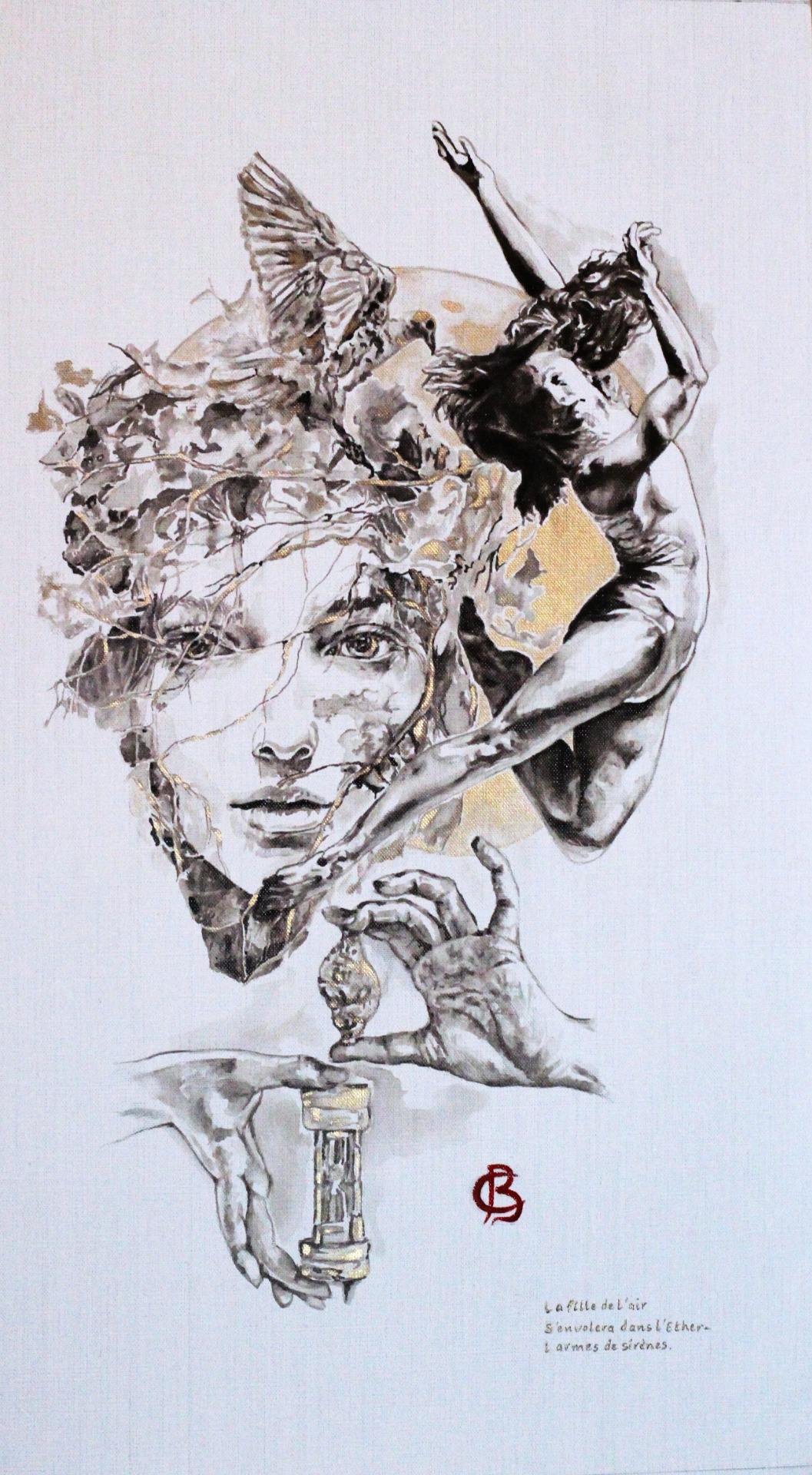Cecile Batillat - L'inchiostro come ponte tra l'effimero e l'essenza
di Francesca Callipari
Artista francese, laureata in Arti Plastiche, Video e Nuove Tecnologie all'Università di Parigi, le sue opere sono ispirate all'inconscio collettivo delle fiabe. Una ricerca sull'interazione tra luce e oscurità che mette in discussione i concetti orientali e occidentali di rappresentazione. Gli haiku che accompagnano le sue opere offrono una nuova prospettiva, andando oltre la percezione sensoriale verso una realtà simbolica che illumina l'aspirazione e la condizione umana.

L'arte di Batillat è una calligrafia dell'anima capace di incidere sentimenti ed emozioni per mezzo dell'inchiostro, dando vita ad opere dal taglio fotografico che conducono inevitabilmente l'osservatore ad una riflessione sulla dualità, sulla caducità e sull'indistruttibile dignità dello spirito umano. Osservando opere come Sortie des ondes - Larmes de sirènes, Sylphide brisée e Parfum de varech, emerge prepotentemente la struttura dialettica che contraddistingue il suo stile: un lirismo grafico che affonda le radici in un realismo onirico, tra luci e ombre, pregno di una dimensione simbolica.
Come una sinfonia di contrasti, trame vegetali e figure danzanti abitano le sue composizioni fondendosi in un unico, ininterrotto dinamismo spirituale, sospeso tra terra e cielo.

È il conflitto eterno tra materia e spirito, un dialogo infranto e mediato dalla presenza inesorabile del tempo. Quello scorrere del tempo che non è semplice sfondo concettuale bensì un tema cruciale e tangibile soprattutto nei volti di alcuni personaggi, spesso incorniciati o spezzati. Questi, guardano l'osservatore con una malinconia profonda, testimoni silenziosi della fragilità della bellezza di fronte alla sua caducità.
Tuttavia, non c'è un dramma teatrale nei loro gesti, ma una rassegnata consapevolezza. L'artista non impone una visione pessimistica: usa fiori e farfalle non per fini puramente decorativi, ma come emblemi dal significato profondo.
Sono elementi che suggeriscono un auspicio di rinnovamento: anche sotto il velo del dolore, la vita persiste nel suo ciclo perenne... un messaggio di speranza che rimanda alla continuità dello spirito. Il costrutto concettuale dell'opera trova, infine, la sua massima realizzazione proprio grazie all'integrazione degli Haiku. Essi, lungi dall'essere semplici appendici testuali, rappresentano piuttosto le chiavi ermeneutiche che guidano al cuore delle opere. Esortando l'osservatore ad oltrepassare la pura percezione sensoriale, diventano un varco offerto al fruitore per toccare quella verità invisibile che l'artista intende comunicare.
Francesca Callipari
Art critic and Art curator
EN
Cecile Batillat - Ink as a bridge between the ephemeral and the essence
A French artist with a degree in Visual Arts, Video, and New Technologies from the University of Paris, her works are inspired by the collective unconscious of fairy tales. Her exploration of the interplay between light and darkness challenges Eastern and Western notions of representation. The haiku that accompany her works offer a new perspective, moving beyond sensory perception toward a symbolic reality that illuminates aspiration and the human condition.

Batillat's art is a calligraphy of the soul, capable of capturing feelings and emotions through ink, giving rise to photographic works that inevitably lead the viewer to reflect on duality, transience, and the indestructible dignity of the human spirit. Observing works such as Sortie des ondes - Larmes de sirènes, Sylphide brisée, and Parfum de varech, the dialectical structure that distinguishes his style forcefully emerges: a graphic lyricism rooted in a dreamlike realism, balancing light and shadow, imbued with a symbolic dimension.
Like a symphony of contrasts, vegetal textures and dancing figures inhabit his compositions, merging into a single, uninterrupted spiritual dynamism, suspended between earth and sky.
It is the eternal conflict between matter and spirit, a broken dialogue mediated by the inexorable presence of time. This passage of time is not a simple conceptual backdrop but a crucial and tangible theme, especially in the faces of certain figures, often framed or broken. They gaze at the viewer with profound melancholy, silent witnesses to the fragility of beauty in the face of its transience.
However, there is no theatrical drama in their gestures, but rather a resigned awareness. The artist does not impose a pessimistic vision: she uses flowers and butterflies not for purely decorative purposes, but as emblems with profound meaning.
These are elements that suggest a hope for renewal: even beneath the veil of pain, life persists in its perennial cycle... a message of hope that refers to the continuity of the spirit. Finally, the work's conceptual construct finds its maximum realization precisely through the integration of haiku. Far from being simple textual appendices, they represent the hermeneutic keys that lead to the heart of the works. By encouraging the observer to go beyond pure sensory perception, they become a gateway for the viewer to touch the invisible truth the artist intends to communicate.
Francesca Callipari
Art critic and Art curator